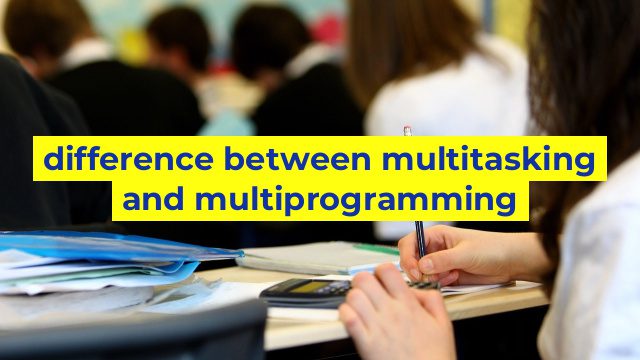The Difference Between Multitasking and Multiprogramming
Introduction
In the world of computers, there is a lot of jargon that can be quite confusing. Two terms that are often used interchangeably are multitasking and multiprogramming. Although they may sound similar, there is a significant difference between the two.
Multitasking
Multitasking is the ability of the computer to accomplish multiple tasks simultaneously. The computer achieves this by dividing the central processing unit (CPU) time into smaller slices and allocating each slice to a different task. This allows the computer to switch between tasks quickly and efficiently, giving the impression that the computer is doing multiple things at once.
For example, if you are working on a document while downloading a file and listening to music, your computer is multitasking. Each of these tasks is being given a portion of CPU time, and the computer is rapidly switching between them.
Multiprogramming
Multiprogramming is the ability of the computer to run multiple programs simultaneously. Unlike multitasking, the CPU does not switch between tasks rapidly. Instead, the computer will execute one program, and when it is waiting for input or output, it will switch to another program and execute it.
For example, if you have several programs open on your computer (such as a music player, web browser, and word processor), your computer is multiprogramming. It is running different programs simultaneously, but it is executing them one at a time.
The Key Differences
The key difference between multitasking and multiprogramming is the way in which the CPU time is allocated. In multitasking, the CPU switches between tasks quickly and efficiently, while in multiprogramming, the CPU executes one program at a time.
Another difference is the level of interactivity between programs. In multitasking, programs can interact with each other, and the user can switch between programs easily. In multiprogramming, programs are independent, and the user may need to close one program before opening another.
Conclusion
Although multitasking and multiprogramming may sound similar, they are two different concepts. The next time you hear someone talking about these terms, you can impress them with your knowledge of the difference between the two. Knowing the difference can also help you understand how your computer is functioning and why it may be running slowly.
Table difference between multitasking and multiprogramming
| Aspect | Multitasking | Multiprogramming |
|---|---|---|
| Definition | The ability of an operating system to run multiple tasks concurrently. | Running multiple programs on a single processor at the same time by dividing the processor’s time among them. |
| Context switching | Involves frequent context switching between tasks. | Involves less context switching between programs. |
| Resource allocation | Tasks share the same resources and need to be allocated time slices from the processor. | Each program gets its own resources and share them only when necessary. |
| Memory management | Allows for each task to have its own memory space. | Only one program is in memory at a time. |
| Examples | Switching between different applications on a computer. | Running a web browser, a word processor, and an email client at the same time. |

